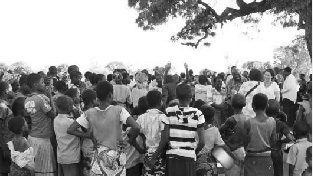Investments, Not Charity, Provide Hope
Helping Ethiopian parents to become economically self-sufficient keeps families together.
You are viewing:
Information released online from June 2012 to September 2017.
Note: Content in this archive site is NOT UPDATED, and external links may not function. External links to other Internet sites should not be construed as an endorsement of the views contained therein.
You are entering the 2012-2017 Archive for the
United States Agency for International Development web site.
If you are looking for current information, visit www.usaid.gov.



*From 1990 to 2010 the number of children in school rose to nearly 90%, and around two billion people gained access to clean water. Child mortality rates had fallen by 47% and poverty rates by 52%.

But extreme poverty is more than just a number – it is the denial of basic freedoms and human dignity.
People living in extreme poverty are forced to make impossible choices daily between food, medicine, housing, or education.
USAID is committed to eradicating extreme poverty within the next 15 years.
*In October 2015, the World Bank updated the international poverty line from $1.25 a day (at 2005 international prices) to $1.90 a day (at 2011 international prices). To learn more about this, please click here.

Helping Ethiopian parents to become economically self-sufficient keeps families together.

After losing everything in Cyclone Aila, farmers use flood and salt tolerant seeds to resurrect rice paddies.

Savings and loan groups allow villagers to grow income and businesses while feeding families.

USAID is forging high-impact partnerships to harness innovation
and scale meaningful results to end extreme poverty.
This new model of development promotes local ownership, leverages private investment, spurs innovation, harnesses scientific and technological advances, and demands the results and accountability that will enable us to meet today’s critical development challenges.

Comment
Make a general inquiry or suggest an improvement.